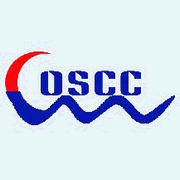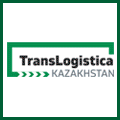Scania and the South Korean equipment manufacturer, Doosan Infracore, have agreed to further increase their current cooperation. According to a Letter of Intent, Scania, from 2014, will not only supply engines for Doosan’s articulated dump trucks and large wheel loaders but also other products within the Doosan range.
“In the long term, we are estimating delivery of well over 3,000 engines annually to Doosan Infracore. This cooperation has strengthened our position in the growing Asian market,” says Robert Sobocki, Senior Vice President and Head of Scania Engines.
Doosan Infracore is well positioned within the Chinese market. Several models from a total of over 20,000 machines sold annually in China will be powered by Scania engines.
“We have tested Scania’s engines in our products and they meet our expectations for reliability, outstanding performance and high fuel efficiency. We also appreciate Scania’s modular concept. One engine platform for all emission levels is of great benefit. For instance, it helps in our design installation work and thanks to Scania’s global service network, our customers also get access to excellent support.” says Andrew H. Choi, Sourcing Director at Doosan Infracore.
Robert Sobocki adds “Our engines fulfill our OEMs’ expectations and their experience tells us that not only do we have powerful systems to offer, the fuel efficiency has also improved.”
Scania industrial engines will manage Stage IV and Tier 4 final with EGR and SCR technology but without a particulate filter. The newly developed engine platform is the same for all emission levels ranging from Stage II to Stage IV and is extremely reliable.
Doosan Infracore is the leading machine manufacturing company in Korea, producing a wide portfolio including construction equipment and machine tools. Doosan Infracore is a part of the global Doosan Corporation.
Scania will showcase the Scania Stage 4/Tier 4 final engine at Intermat, stand G 151, Hall 5A.
Doosan Infracore will be showing the company’s construction equipment products at Intermat on stand 6-G079 in Hall 6.
Source Scania
BP today announced a deal with FedEx to offset the carbon emissions of over 200 million FedEx Envelopes shipped worldwide yearly.
Through the carbon-neutral FedEx Envelope shipping program, FedEx will calculate the carbon dioxide released through FedEx Envelope shipments on an annual basis and purchase the equivalent amount of carbon offsets from BP not-for-profit, BP Target Neutral scheme. This will neutralize the equivalent amount of CO2 emissions by supporting investments in low carbon development projects that reduce or remove carbon from being released into the atmosphere.
These projects also create additional environmental, social and economic benefits locally. They include a biogas farm facility in the Netherlands, a reforestation project in the Tanzanian Southern Highlands that is converting degraded grassland to commercial forest and a landfill gas collection system at Thailand first sanitary landfill.
The agreement between BP Target Neutral and FedEx makes FedEx Express the first global express transportation company to offer carbon neutral envelope shipping at no extra charge to the customer.
Through EarthSmart, FedEx continues to lead in sustainable shipping. To offset our FedEx Envelopes, we chose BP Target Neutral based on how thoroughly they vet and research their projects, the added oversight of the independent assurance panel that monitors Target Neutral and the affordable rate structure, says Mitch Jackson, VP Environmental Affairs and Sustainability, FedEx Corporation.
This is a milestone agreement between BP Target Neutral and FedEX, said Andrea Abrahams, BP Global Director for BP Target Neutral. It is one of many examples in which businesses throughout the world can play their part in reducing impact of carbon emissions on the planet.
BP is the Official Oil and Gas Partner for the London 2012 Olympics and Paralymics and BP Target Neutral is the first ever Official Carbon Offset Partner of a summer Games.
The carbon neutral program extends to all FedEx Envelope shipping options, including FedEx First Overnight, FedEx Priority Overnight, FedEx Standard Overnight, FedEx 2Day, FedEx Economy 2Day A.M. and FedEx Express Saver. More than 200 million FedEx Envelopes are shipped around the world every year.
About BP Target Neutral
BP Target Neutral was set up in 2006 as part of BPā€™s broader commitment to helping practical sustainability. It is a not-for-profit carbon management program, which encourages consumers to reduce, replace and neutralise their carbon emissions from transport. BP covers BP Target Neutralā€™s operating costs. When people use BP Target Neutral to offset their carbon, all the money paid to offset is used to support genuine carbon offset projects that also have positive local environmental and socio-economic benefits.
BP Target Neutral is a founding member of ICROA, the International Carbon Reduction and Offsetting Alliance which has recently merged with IETA, the International Emissions Trading Association. BP Target Neutral is audited against the ICROA Code of Best Practice annually and is currently the only not-for-profit member.
BP Target Neutral work is governed by an Independent Advisory and Assurance Panel of prominent environmental and industry experts. The Panel ensures that all policies and activities conform to best practice in carbon management, and where possible will set new standards for that best practice: members of BP Target Neutral can be confident they are making a real contribution to a sustainable future.
About the London 2012 offset
In supporting the ambition for London 2012 to be the most sustainable Games possible, BP Target Neutral is inviting London 2012 ticketholders, from across the world, to set a new world record for the largest number of individuals to offset their travel carbon to a single event.
In so doing, BP not-for-profit BP Target Neutral carbon management scheme is seeking to create awareness of the environmental impact of all journeys and will invite ticketholders to sign up to have their travel carbon footprint offset at no cost to themselves.
Spectators heading to the Games from across the world will be asked to confirm where they are travelling from and their CO2 emissions will then be calculated to be offset by BP at no cost to the individual. This aims to raise awareness of carbon emissions relating to travel choices and the ways to reduce and offset them among a wide and varied audience.
As the London 2012 official Carbon Offset Partner, BP Target Neutral will be providing the administration and funds to offset the carbon emissions from Games-related travel of ticketholders. The more people that sign up, the more BP Target Neutral can support low carbon development projects worldwide.
Source BP press office
On April 9 to the berth 3 m/v THOR COMMANDER (132x16 m flag of Antigua and Barbuda) is moored. In the dry cargo there are two trains of 9 cars. Experts stevedoring company "Olimpex Coupe International", which is operating with a 3 and 4 berths were able to begin unloading the wagons only 8:00 on April 10. Commencement of works was delayed due to strong wind, which work with such a marker and a massive load is unacceptable. As reported deputy director on operation Sergei Pastukh at 15 hours two cars were unloaded. In the mid-March Stevedoring Company "Olimpex Coupe International" made unloading of the first 18 cars delivered by ship LE LI (flag of China). Total to July to Ukraine from the Republic of Korea is scheduled to deliver 10 trains (90 cars) produced by HYUNDAI ROTEM.
Source Press-Service "OCSP"
On April 10 on a saint day of its liberation from Nazi invaders in the port of Odessa has laid the foundation of the new grain terminal at the pier of Androsovsky. The ceremony is attended by Vice Prime Minister and Minister of Infrastructure Borys Kolesnikov, chairman of the Odessa regional state administration Eduard Matviychuk, state policy director of the Department of Maritime and River Transport Sevryukov Vladimir, the head of the Odessa port Yuri Vaskov, Honorary President of the State Enterprise OCSP Nikolai Pavlyuk, Director General of the stevedoring company "Brooklyn-Kiev» Yuri Gubankov. As noted Y.Vaskov in the port of Odessa it is a tradition to celebrate the holiday commencement of construction of significant projects. On this day two years ago was the start of large-scale project "Quarantine Mole" The current object can rightly be called ambitious. The grain terminal with capacity of 4 million tons of grain per year, building on an equal footing the port of Odessa and the company "Brooklyn-Kiev," which the company has already sold more than one project. Investments will amount to $ 125 million: 40 million - the contribution of the port, 85 million - the company-investor. - The grain terminal, which is laid today - said B.Kolesnikov - should start operating in September next year. It will process 15 percent of the essence. Ukrainian grain exports. This project is world class and the investment that the investor is investing in its implementation, at international standards. Governor of Odessa region Eduard Matviychuk , who always sympathized with and supported all initiatives port, port workers greeted the start of construction of one of the largest grain terminals on the Black Sea. In the old tradition and B.Kolesnikov E.Matviychuk laid two coins with the symbols of the "Euro 2012" in the basement of the terminal. It has long been believed that it brings good luck and hope that the facility will be profitable and promising. B.Kolesnikov presses a button, giving the signal for the construction. At the signal begins to hammer pile driver pile. The port is already building a berth length of 254 m and a depth of 12.5 m from the cordon, which will receive and process-Panamax ships. The new terminal at the pier Androsovskom has every reason to become one of the most promising in the Black Sea. According to maritime tradition Y.Vaskov wished terminal under construction "seven feet under the keel."
Source Press-Service OCSP
On April 10 at the Customs sq. in front of the building of the port of Odessa was a solemn meeting devoted to the 68th anniversary of the liberation of the city from invaders. For hundreds of port workers and students to the Naval Lyceum with an appeal to keep holy the memory of soldiers who gave their lives for the freedom of the homeland, asked the chief port of Yuri Vaskov, Honorary President of the State Enterprise "OMTP" Nikolai Pavlyuk, Director of State Policy for Maritime and River Transport, Vladimir Sevryukov, chairman of the trade union committee of the port Vladimir Zaikov, Chairman of the Board of Veterans port Nicholas stout. Speakers expressed their deep gratitude to generation, through the sacrificial feat which was achieved a great victory and restored the national economy. Those who came to the rally commemorated the liberators moment of silence. By the Eternal Flame monument, a monument dockers who died during World War II, laid wreaths and flowers.
Source Port of Odessa
2012-04-11
CA-NEWS (KG) - Prime Minister of Kyrgyzstan Omurbek Babanov signed a decree approving a draft agreement on air communication between the Government of Kyrgyzstan and the Government of Azerbaijan on March 30.
Under the decision the Minister of Transport and Communications is authorized to sign the draft agreement on air communication between the Government of Kyrgyzstan and the Government of Azerbaijan with the right to introduce not crucial changes and additions on behalf of the Government of Kyrgyzstan.
Source central asian news service
CA-NEWS (KZ) - President of Kazakhstan Nursultan Nazarbaev held the session in Astana yesterday, where report on the National Bank’s progress in 2011 was discussed, the presidential press service said.
The meeting was attended by Head of Presidential Administration Aslan Musin, Chairman of the National Bank Gregory Marchenko, Deputy Prime Minister Kerim Kelimbetov, Chairman of the Board of National Welfare Fund "Samruk-Kazyna" Umirzak Shukeev, Deputy Head of Presidential Administration Bakhyt Sultanov, Finance Minister Bolat Zhamishev, Minister of Economic Development and Trade Bakhytzhan Sagintaev, as well as the Head of Committee for Control and Supervision of Financial market and Financial Organizations within the National Bank.
"The Government should help stimulate activity of domestic banks. Apart from that, it should mainly focus on stabilizing BTA and Alliance Banks that have undergone debt restructuring," the press service added citing Nazarbaev.
Earlier in 2009-2010 three Kazakhstan-based banks – BTA, Alliance and Temir – resorted to debt restructuring schemes. BTA is currently negotiating a second debt restructuring with its creditors.
Head of State pointed to the poor quality of the loan portfolios and low lending activity. He emphasized that threats to the global economy are still there, Eurozone problems are still remaining unsolved. And all of these factors will have their effect on the national financial system of Kazakhstan.
President gave some specific instructions related to the tenge exchange rate, anticipated inflation corridor of 6-8% and streamlining of the nation’s accumulation pension funds.
Besides, he broached some aspects of the National Fund’s assets management, further development of the insurance market, and concerted monetary policies with the Customs Union member states.
BTA Bank defaulted in 2009. In September 2010, BTA Bank completed the first restructuring of its debt. As a result, the bank’s debt was slashed from $16.65 to $4.2 billion. After the restructuring it is controlled by National Welfare Fund "Samruk-Kazyna"(81.48 percent). The bank’s creditors received over 18 percent of shares after the restructuring.
BTA Chairman Anvar Saidenov proposed a second restructuring letter to shareholders to evade bankruptcy on December 23. The bank defaulted on its $150 million coupon payment in January 2012.
Source central asian news service
CA-NEWS (KZ) - Business activity increased by 3% in Kazakhstan in March 2012, the Statistics Agency said.
"Industrial leaders noted an increase in demand for finished products, which led to the growth in production volumes of their businesses in March this year compared with the previous month," the press service added.
Index of business confidence, which characterizes the change in business activity, increased by 3 percentage points and amounted to (+9)%.
Many heads of industrial enterprises expect the growth in their organizations in the short term until June 2012.
Prior to June 2012, (67)% of companies expect the immutability of the financial and economic activity compared to the current moment of (22)%, also an improvement and (9)% - a recession.
Source central asian news service
Scania and the South Korean equipment manufacturer, Doosan Infracore, have agreed to further increase their current cooperation. According to a Letter of Intent, Scania, from 2014, will not only supply engines for Doosan’s articulated dump trucks and large wheel loaders but also other products within the Doosan range.
“In the long term, we are estimating delivery of well over 3,000 engines annually to Doosan Infracore. This cooperation has strengthened our position in the growing Asian market,” says Robert Sobocki, Senior Vice President and Head of Scania Engines.
Doosan Infracore is well positioned within the Chinese market. Several models from a total of over 20,000 machines sold annually in China will be powered by Scania engines.
“We have tested Scania’s engines in our products and they meet our expectations for reliability, outstanding performance and high fuel efficiency. We also appreciate Scania’s modular concept. One engine platform for all emission levels is of great benefit. For instance, it helps in our design installation work and thanks to Scania’s global service network, our customers also get access to excellent support.” says Andrew H. Choi, Sourcing Director at Doosan Infracore.
Robert Sobocki adds “Our engines fulfill our OEMs’ expectations and their experience tells us that not only do we have powerful systems to offer, the fuel efficiency has also improved.”
Scania industrial engines will manage Stage IV and Tier 4 final with EGR and SCR technology but without a particulate filter. The newly developed engine platform is the same for all emission levels ranging from Stage II to Stage IV and is extremely reliable.
Source Scania
BP announced a deal with FedEx to offset the carbon emissions of over 200 million FedEx Envelopes shipped worldwide yearly.
Through the carbon-neutral FedEx Envelope shipping program, FedEx will calculate the carbon dioxide released through FedEx Envelope shipments on an annual basis and purchase the equivalent amount of carbon offsets from BP’s not-for-profit, BP Target Neutral scheme. This will neutralize the equivalent amount of CO2 emissions by supporting investments in low carbon development projects that reduce or remove carbon from being released into the atmosphere.
These projects also create additional environmental, social and economic benefits locally. They include a biogas farm facility in the Netherlands, a reforestation project in the Tanzanian Southern Highlands that is converting degraded grassland to commercial forest and a landfill gas collection system at Thailand’s first sanitary landfill.
The agreement between BP Target Neutral and FedEx makes FedEx Express® the first global express transportation company to offer carbon neutral envelope shipping at no extra charge to the customer.
“Through EarthSmart, FedEx continues to lead in sustainable shipping. To offset our FedEx Envelopes, we chose BP Target Neutral based on how thoroughly they vet and research their projects, the added oversight of the independent assurance panel that monitors Target Neutral and the affordable rate structure,” says Mitch Jackson, VP Environmental Affairs and Sustainability, FedEx Corporation.
”This is a milestone agreement between BP Target Neutral and FedEX,” said Andrea Abrahams, BP’s Global Director for BP Target Neutral. “It is one of many examples in which businesses throughout the world can play their part in reducing impact of carbon emissions on the planet.”
BP is the Official Oil and Gas Partner for the London 2012 Olympics and Paralymics and BP Target Neutral is the first ever Official Carbon Offset Partner of a summer Games.
The carbon neutral program extends to all FedEx Envelope shipping options, including FedEx First Overnight®, FedEx Priority Overnight®, FedEx Standard Overnight®, FedEx 2Day®, FedEx Economy 2Day® A.M. and FedEx Express Saver®. More than 200 million FedEx Envelopes are shipped around the world every year.
Source BP
On April 10 at the Customs sq. in front of the building of the port of Odessa was a solemn meeting devoted to the 68th anniversary of the liberation of the city from invaders. For hundreds of port workers and students to the Naval Lyceum with an appeal to keep holy the memory of soldiers who gave their lives for the freedom of the homeland, asked the chief port of Yuri Vaskov, Honorary President of the State Enterprise "OMTP" Nikolai Pavlyuk, Director of State Policy for Maritime and River Transport, Vladimir Sevryukov, chairman of the trade union committee of the port Vladimir Zaikov, Chairman of the Board of Veterans port Nicholas stout. Speakers expressed their deep gratitude to generation, through the sacrificial feat which was achieved a great victory and restored the national economy. Those who came to the rally commemorated the liberators moment of silence. By the Eternal Flame monument, a monument dockers who died during World War II, laid wreaths and flowers.
Source Odessa Commercial Sea Port
MEMBER carriers of Asia Australia Discussion Agreement (AADA) has announced they will increase the rates for services from China and Hong Kong to Australia from May 15.
Freight rates for all outward shipments from China and Hong Kong to destinations in Australia will increase US$300 per TEU and US$600 per FEU for both dry and refrigerated cargo, said the AADA statement, adding that "this increase will apply in full on top of existing ongoing market rates and will be subject to accessorial surcharges applicable at the time of shipment."
AADA consists of 13 carriers serving the trade from north and east Asia to Australia. Its members include: ANL, CSCL, Cosco, Hamburg Sud, Hanjin, Hapag-Lloyd, Hyundai Merchant Marine (HMM), "K" Line, Maersk, MSC, MOL, NYK Line and OOCL.
Source Shipping Gazette - Daily Shipping News
THE latest report posted by Shanghai International Shipping Institute (SISI) asserts that China's shipping market has hit the bottom since the rate collapse last year, Xinhua reports.
According to the report, the China Shipping Prosperity Index (CSPI) in the first quarter of this year is 86.35 points, lower than the prosperity 100-midpoint border, falling 3.6 points compared to the last quarter, but rate of decline has been shrinking.
Though most carriers are still pessimistic, the China Shipping Confidence Index (CSFI) has gone up 9.58 points to 68.92 points compared to the last quarter.
Since the carriers' rate restoration schemes in March led by Maersk, shipping rate has gone up to and is remaining at the level from US$1,300 to $1,400, nearly doubled that of month ago. The report said the rate increases will continue for a while but will be affected by cargo volume in the long run.
SISI's survey shows that 52.6 per cent of the carriers consider that it will be a trend to ally with other carriers as a temporary solution to overcapacity.
Besides, Chinese carriers also will get support from the government. Ministry of Transport spokesman He Jianzhong said that the government is working on measures to boost the shipping industry, including encouraging shippers and carriers to share risk while at the same time, urging consolidation through mergers.
SISI also predicts that the CSPI index will see rapid growth in the second quarter which will bring shipping back towards profitability.
Source Shipping Gazette - Daily Shipping News
CONTAINER carriers in the Westbound Transpacific Stabilisation Agreement (WTSA) has proposed a new round of rates increases for US to Asia services with effect from May 15.
For dry cargo, rates will increase US$50 per FEU from Los Angeles, Long Beach and Oakland to Asia. And for all other cargo, moving via all-water or intermodal service from Pacific Northwest ports, from inland US points and from the US east and Gulf coasts, the increase will be $100 per FEU, said a WTSA statement.
Additionally, a proposed increase of $200 per FEU will be applied to shipments for French fries, frozen vegetables and miscellaneous refrigerated cargo not covered under commodity-specific programmes, for all origins and Asian destinations.
WTSA executive administrator Brian Conrad said "successive rate adjustments taken in recent months have been modest and aimed at incrementally restoring rates in the trade to compensatory levels after a period of significant erosion."
"The diverse and often seasonal nature of westbound traffic makes it necessary to adopt multiple increases for cargo moving under contract throughout the year."
WTSA comprises 10 major container carriers, which include APL, Cosco, Evergreen Line, Hanjin, Hapag-Lloyd, Hyundai Merchant Marine (HMM), "K" Line, NYK Line, OOCL and Yang Ming.
Source Shipping Gazette - Daily Shipping News
OVERHANGING overcapacity in container shipping and weak European demand may well scupper recent rate increases and the sudden rise in the spot market, warns Drewry's latest quarterly Container Forecaster.
"Five new services are being launched in the transpacific before June and we believe that this will put continued pressure on the spot rates and the ability for carriers to push through increases they are seeking in May contract negotiations. This year will see another 59 ships of at least 10,000 TEU enter the global fleet," said the London maritime research consultancy.
"Given that Asia-US demand is still uncertain, this desire to re-introduce so much new capacity, rather than lay-up tonnage, could be a de-railer if there is a weak peak season. The cascading of larger vessels into the north-south trades is also becoming more noticeable and could also be a threat to their stability," said the report.
"We concur and forecast that east-west freight rates including fuel will rise by as much 13.7 per cent this year, but we should not be lulled into a false sense of security by the considerably higher spot rates in the weekly rate indices and think that all is now fixed," said the report.
"Ocean carriers have implemented GRIs [general rate increases] on both the headhaul Asia to Europe and Asia to US trades, but until very recently, even the largest 15,500-TEU vessels in the Asia-north Europe trade were not making money," the report said.
"Recent losses and the high fuel prices have forced the industry into a re-structuring which was started at the end of last year. Many carriers have now grouped together on the core Asia-Europe trade to pool their largest ships into fewer services and to share costs. This was unlikely to have happened several years ago, but has been forced out of necessity," it said.
"Nobody saw the huge $800 per TEU rate increases coming on the Asia-Europe trade and the timing of this bemused virtually everyone. Few believed it would be successful, but carriers have stood firm during a period when load factors have not necessarily been in the high 90s on the headhaul leg," said the report.
Said Drewry container research chief Neil Dekker: "Until the inherent structural capacity is truly tackled, we will continue to have periodic and violent bouts of overcapacity that will keep rates and operating margins yo-yoing up and down. Carriers do not see the severity of their situation since the number of ships in actual full term lay-up is fairly small."
Source Shipping Gazette - Daily Shipping News
The magazine SEA has been published since 1935
International business magazine JŪRA MOPE SEA has been published since 1999
The first magazine in Eurasia in the four languages: English, Chinese, Russian and Lithuanian
|
|




.jpg)






